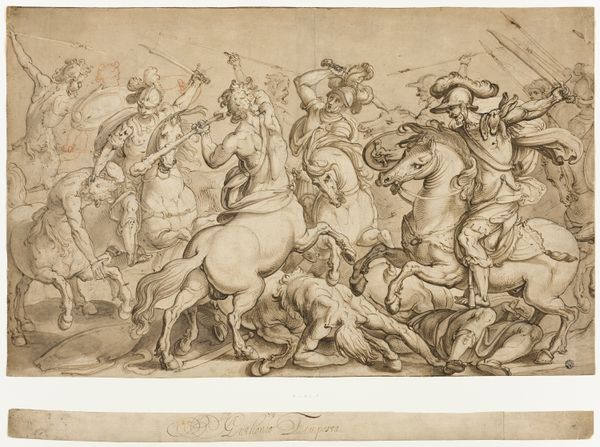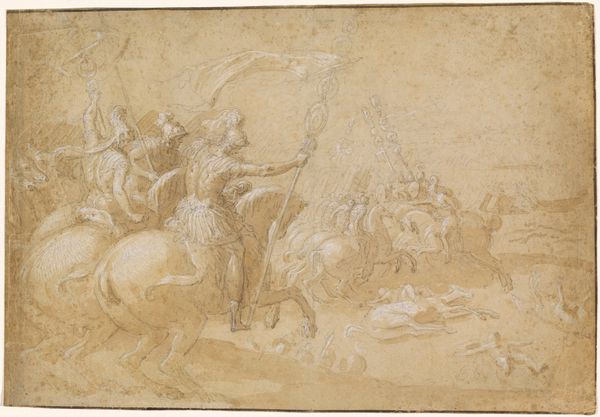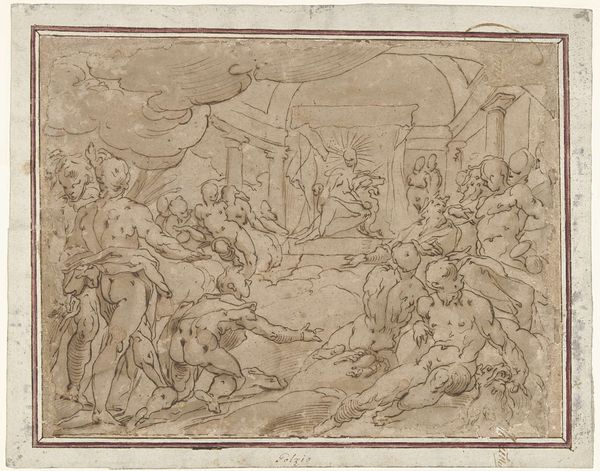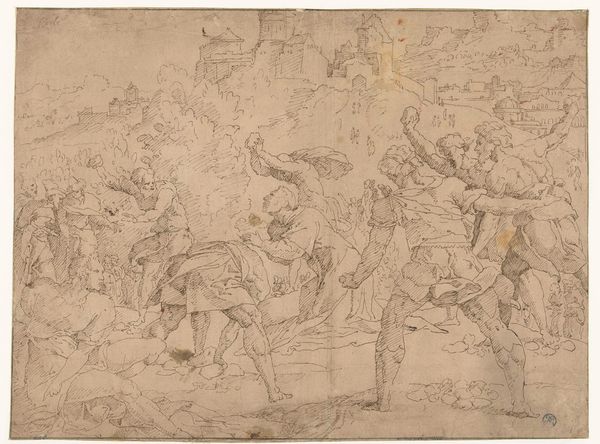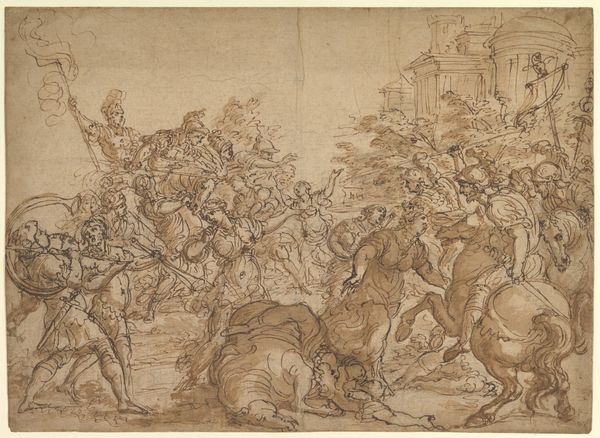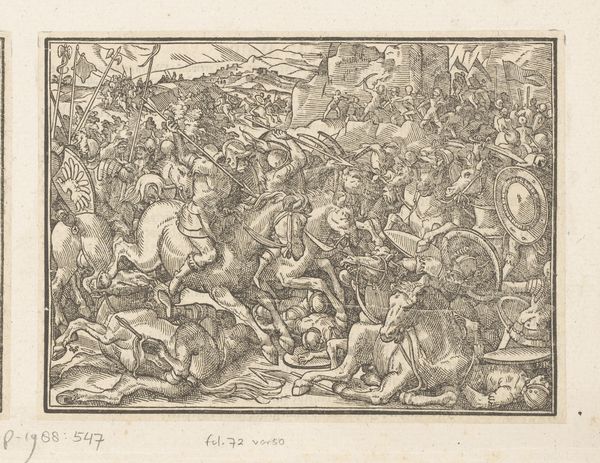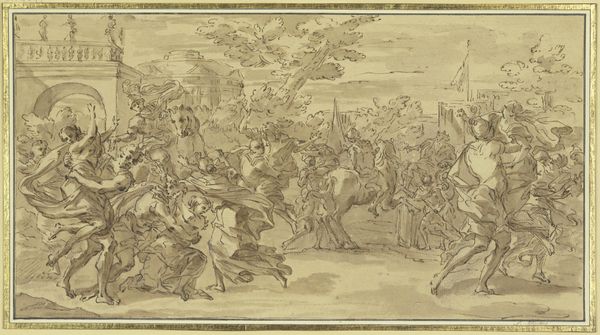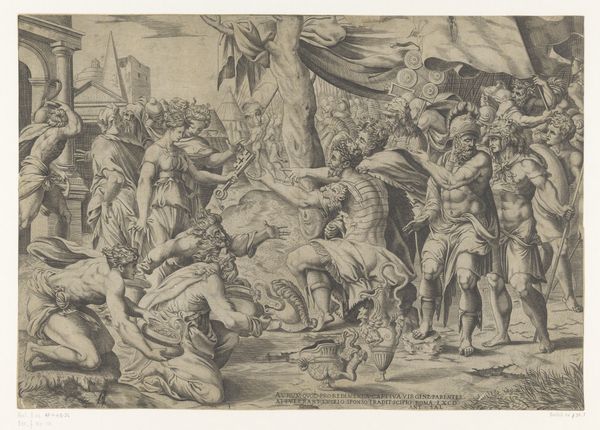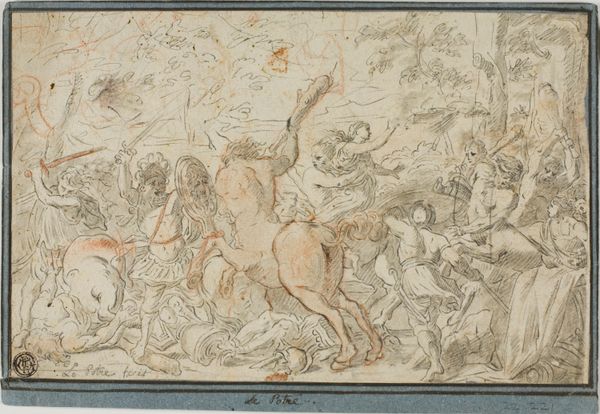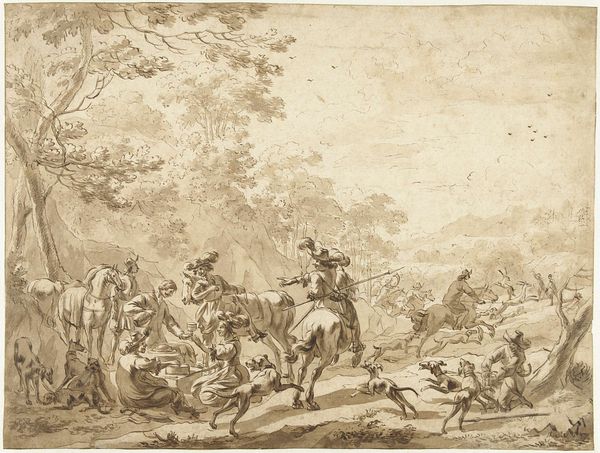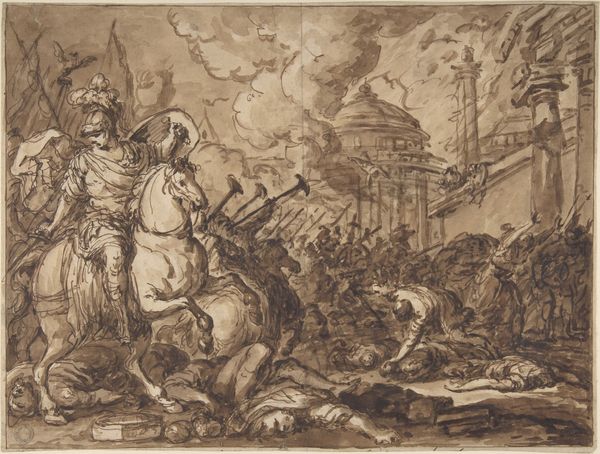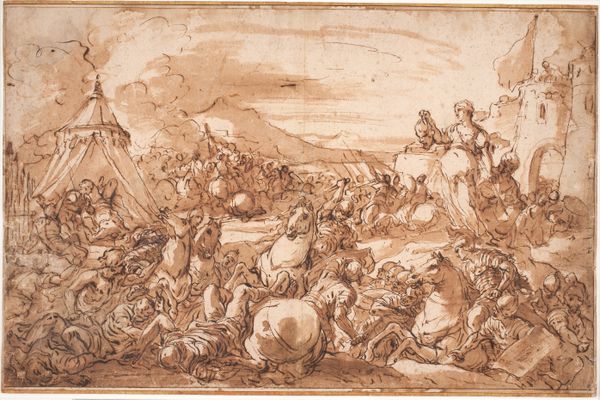
drawing, print
#
portrait
#
drawing
# print
#
figuration
#
horse
#
watercolour bleed
#
history-painting
#
italian-renaissance
Dimensions: sheet: 4 13/16 x 15 13/16 in. (12.2 x 40.2 cm)
Copyright: Public Domain
Curator: This is Pieter Coecke van Aelst's "Conversion of St. Paul," created around 1538. It’s currently housed at the Metropolitan Museum of Art. The artwork employs drawing and print mediums. Editor: Immediately, I’m struck by its linear intensity. The monochromatic sepia tones lends it an antique character and enhance the chaos of the depicted scene. It looks like quite a lot going on here. Curator: Indeed. Van Aelst masterfully employs hatching and cross-hatching to achieve volume and depth. See how the dynamic composition draws the eye from the terrestrial turmoil up towards the divine intervention rendered in the clouds. There is certainly a Renaissance visual order. Editor: From a material perspective, the choice of print allows for broader dissemination of this biblical narrative, a commercial angle worth noting. Also, observe the intense labor etched in those lines. I imagine the meticulous preparation of the plate involved multiple artisans beyond just van Aelst, pointing towards a whole system of craft production that produced these devotional objects for consumption. Curator: The theme of divine intervention juxtaposed against human conflict speaks to the period's religious and societal anxieties. The horse, too, functions symbolically—a classical emblem of power and authority being upended by spiritual awakening. The very placement of the figures dictates how we view a historic and well known painting Editor: It makes one consider, what kind of inks did he use, how was the paper treated and who made it? Were they produced locally or brought from Italy? Did he grind the pigment himself? All are tied to commerce, the circulation of goods, of power and cultural values of its time. It allows viewers to connect with materials. Curator: It underscores the artist’s intent, wouldn’t you agree? Through astute formal arrangement and classical motif references, Van Aelst elevates the historical event into a statement about grace transcending earthly domains. Editor: True, but tracing the journey of the materials gives voice to unseen laborers while placing it within the economic conditions of the period. That opens up to me another area, a better and new perspective that is rarely considered. Curator: Well, whatever the perspective, whether materially driven or design focused, that piece speaks to complex social dynamics, religious devotion, and masterful printmaking within the vibrant tapestry of the Renaissance. Editor: Agreed, and I think viewers can find renewed appreciation by recognizing all aspects of artistic expression through a work's creation and form.
Comments
No comments
Be the first to comment and join the conversation on the ultimate creative platform.
